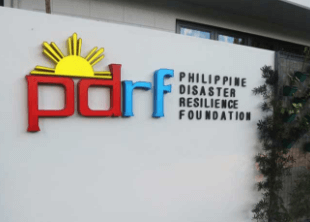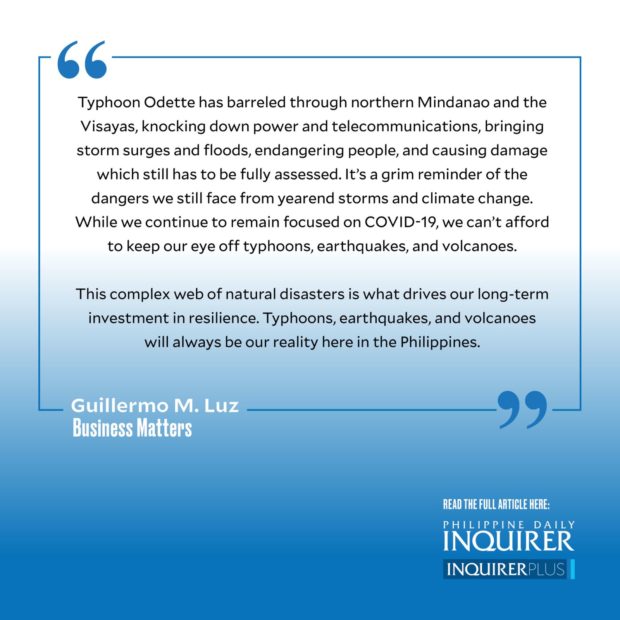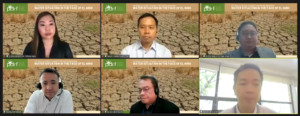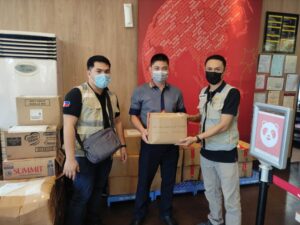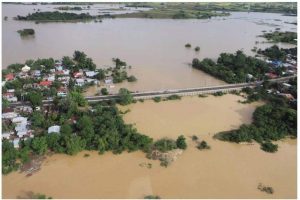The Philippine Disaster Resilience Foundation (PDRF) celebrated its 10th anniversary only this week following a delay of over a year brought about by the COVID-19 pandemic. We were established in 2009 following Typhoon “Ondoy” and officially incorporated the following year. We’ve been through a lot of events over the last 10 years—aside from Ondoy in 2009, the Bohol Earthquake in 2013, Supertyphoon “Yolanda”/Haiyan in November 2013, all the way to “Rolly,” “Ulysses,” and now “Odette.”
These last two years have been like none we’ve ever experienced or seen. We started off 2020 with a volcanic eruption, experienced multiple typhoons and minor earthquakes, and entered a pandemic which we are still working our way out of in 2021 and into 2022. The PDRF has now had to activate and operate through all the four major natural disasters we were designed for: typhoons, earthquakes, volcanoes, and pandemics.
When we reorganized to focus on resilience, many wondered how that could be operationalized and how its value could be measured. Experience now tells us that if there were ever a time to invest in resilience, that time is now. Preparedness and prevention measures have enabled us to minimize loss of life and damage and to respond quickly to natural disasters.
If there was one emergency we did not fully anticipate, it was the severity of a pandemic like COVID-19. While we had imagined localized outbreaks of other diseases like measles and dengue, we were not quite ready for a pandemic of global proportions. Fortunately, our network of private sector partners, multilateral institutions, and government enabled us to form new networks for public health crises to mobilize resources and expertise.
The COVID-19 emergency led us to create such projects as Ugnayan, which provided grocery gift certificates and food to over 14 million people from low-income families in Greater Metro Manila in partnership with Caritas, ABS-CBN, Jollibee, and the Asian Development Bank immediately after the first lockdown in March 2020. We also ran Project Kaagapay with Zuellig Pharma, Metro Drug, and ABS-CBN to provide PPE (personal protective equipment) and ventilators for hospitals. Finally, we launched Task Force T3 (for Test, Trace, and Treat) in the middle of an enhanced community quarantine with the National Task Force Against COVID-19, Department of Health, and over 50 corporations to expand PCR testing and improve supply chain management for laboratory test supplies, pooled testing, serosurveillance, One Hospital Command, health care worker recruitment, and other challenges.
We eventually expanded our work to include the national vaccination rollout and assistance for vaccine supply chain management. Since March 1, over 100 million vaccines have been administered and 56 percent of the adult population has been fully vaccinated. With Omicron now present in the Philippines, the moves to accelerate boosters and open up vaccinations for 5- to 11-year-olds is most welcome. We must drive our vaccination coverage higher before local transmission of Omicron or a future, unknown variant sets in.
And now as I write this, Typhoon Odette has barreled through northern Mindanao and the Visayas, knocking down power and telecommunications, bringing storm surges and floods, endangering people, and causing damage which still has to be fully assessed. It’s a grim reminder of the dangers we still face from yearend storms and climate change. While we continue to remain focused on COVID-19, we can’t afford to keep our eye off typhoons, earthquakes, and volcanoes.
This complex web of natural disasters is what drives our long-term investment in resilience. Typhoons, earthquakes, and volcanoes will always be our reality here in the Philippines. We are also convinced that this pandemic will eventually become endemic and a part of our lives in the future. We also feel we must not discount the possibility of a future pandemic. We must invest and build stronger institutions for public health, rapid testing, better surveillance and contact tracing, protective gear, and vaccinations.
This is what the PDRF is all about—Resilience, Prevention, Preparedness, Mitigation, and Response. It’s been a decade of investing in resilience. We look forward to another decade helping create a disaster-resilient Philippines.
Article by Guillermo M. Luz | Philippine Daily Inquirer
